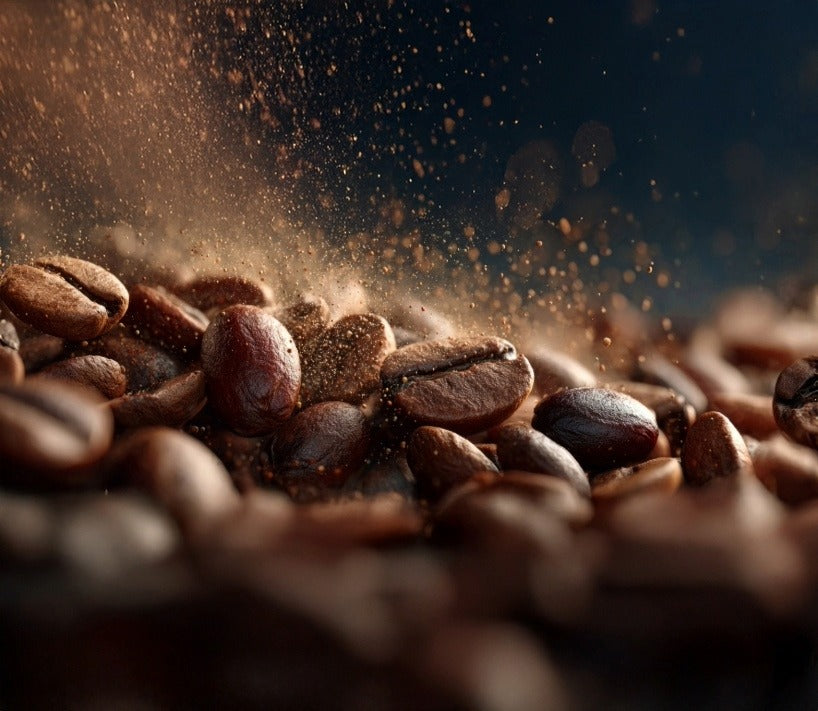Best Craft Coffee at Home: The Secret
June 13, 2025 4 min read
Best Craft Coffee at Home: The Secret to Barista-Level Crema (Yes, You Can Beat the Café!)
Ever stare at your espresso and wonder why the foam looks more “deflated pool float” than “Italian vacation”? If you’ve tried every gadget under the sun yet still can’t coax out that thick, tiger-striped layer of crema, buckle up—today we’re unpacking the science (and the silliness) behind pulling café-worthy shots with the best craft coffee at home.
“Why Does Your Crema Keep Ghosting You?”
Question of the day: If crema is just tiny bubbles of CO₂ dancing on espresso, why does mine look like day-old dishwater?
Short answer: It’s not you; it’s your beans.
Crema is the espresso world’s Snapchat filter—it makes everything look better, revealing texture, freshness, and flavor before your first sip. The catch? Only fresh, high-scoring, air-roasted beans can fuel that picture-perfect foam. Let’s see why.
The Nerdy Stuff You Actually Need
When coffee is roasted, CO₂ builds up inside the bean like pressure in a tiny flavor balloon. Pull a shot soon after grinding, and that trapped gas rushes out, creating that luscious caramel-colored foam. But:
| Bean Condition | CO₂ Left in Bean | Crema “Wow” Factor | Flavor Clarity |
|---|---|---|---|
| Fresh, air-roasted (3–10 days off roast) | 🚀 High | Thick & tiger-striped | Sweet, bright |
| Drum-roasted, 3 weeks old | 🐢 Low-ish | Thin & spotty | Muted & flat |
| Store-shelf “mystery beans,” 3 months old | 💤 Almost none | Non-existent | Stale & papery |
Source: My own nose, palate, and 5,000 lbs of beans I’ve roasted (your mileage may vary, but science agrees).
2. Why Air Roasting Wins
Traditional drum roasters heat beans by tumbling them against scorching metal, sometimes leading to singed edges and uneven roast profiles. Fluid-bed air roasting, by contrast, suspends beans on a jet of super-hot air, roasting them evenly, preserving more aromatic compounds, and—drumroll—locking in extra CO₂ for crema.
3. The “High-Scoring” Factor
In specialty coffee grading, anything scoring 80+ on the SCA scale is considered “specialty.” Higher scores mean denser green seeds, better moisture levels, and fewer defects—all of which translate to more CO₂ retention after roasting. Simply put: higher score → better crema potential.
Your 5-Step Roadmap to Crema Glory
Goal: Turn your kitchen into the best craft coffee at home laboratory—minus the mad scientist eyebrows.
Step 1: Buy the Right Beans
Look for:
-
Harvest year (current), processing method (washed/natural), and roast date clearly printed.
-
If you’re hunting the best coffee to buy online or the freshest craft coffee online, focus on roasters who air-roast to order and ship the same day.
Step 2: Let Them Rest—but Not Retire
Fresh is king, but there’s a sweet spot. For espresso, aim for 3–10 days post-roast. Pulling shots within 24 hours can lead to too much gas release, giving you a fizzy mess. After ~14 days, crema starts thinning.
Step 3: Grind Like Goldilocks
-
Use a burr grinder (no blade massacres, please).
-
Dial in so the shot lands at 1:2 brew ratio (e.g., 18 g in → 36 g out) in 25–30 seconds.
-
Adjust until the stream looks like warm honey and the crema is thick enough to float sugar.
Step 4: Temperature & Pressure—The Dynamic Duo
-
Water temp: 195–205 °F (90–96 °C).
-
Pressure: A stable 9 bar. Fluctuations kill crema faster than spoilers kill movies.
Step 5: Clean Gear = Clean Crema
Old coffee oils polymerize (fancy word for “turn into crusty gunk”) and smother crema. Back-flush your machine daily and deep-clean weekly.
Quick-Fire Crema Myths (Busted!)
| Myth | Truth (In One Breath) |
|---|---|
| “Any espresso bean works.” | Nope. Roast style, density, and freshness are non-negotiable. |
| “Pre-ground is fine.” | Only if you enjoy flat, lifeless brown water. |
| “More pressure = more crema.” | Excess pressure destabilizes foam; stick to 9 bar. |
| “Crema = good coffee.” | It’s a sign, not a guarantee. Still sip and judge the taste! |
Fresh On-Page Element: Espresso Shot “Life Cycle” (Bullet Snapshot)
-
0–10 sec: Crema balloons, color shifts from toffee to caramel.
-
10–30 sec: Big bubbles pop, surface evens out.
-
30–90 sec: Crema thins, but flavor sweet spot begins.
-
2 min+: Foam collapses, flavors flatten—drink up, champ!
Frequently Asked Questions
Q1. What coffee roast level produces the most crema?
A light-to-medium roast with high-quality beans preserves more CO₂, creating thicker crema.
Q2. Does water quality affect crema?
Absolutely. Hard water can suppress foam stability; aim for 50–150 ppm total dissolved solids with balanced alkalinity.
Q3. Can I get great crema with a budget espresso machine?
Yes—if it maintains consistent 9-bar pressure and you follow proper technique. Machine cost matters less than bean quality and freshness.
Q4. How long should I wait before brewing fresh air-roasted beans?
Rest them for 3–10 days post-roast for optimal crema and balanced flavor.
Final Sip (Because Rewards Matter)
If you’ve made it this far, you’re officially armed to pull espresso shots that could make a barista blush. Remember:
-
Start with the best craft coffee at home—air-roasted, high-scoring, and freshly shipped.
-
Mind the details—rest days, grind size, water specs, and machine maintenance.
-
Taste > Tech—No gadget will out-perform stale beans; freshness is the real flex.
Next time someone claims you need a $3,000 chrome beast for real crema, grin, nod, and invite them over. One sip of your tiger-striped masterpiece and they’ll be googling “top specialty coffee online” faster than you can say best coffee subscription online.
Happy brewing, foam fanatics—may your crema rise and your spirits stay caffeinated!
Also in Best Coffee To Buy Online Education

Best Fresh Roasted Coffee Delivery Online
November 28, 2025 4 min read
I roast the best tasting coffee at home for you! I use 100% electric equipment, so no hydrocarbons here. Best fresh roasted coffee delivery starts with high-scoring specialty coffee online.

Which Roaster Makes Better Coffee: Gas or Electric?
November 27, 2025 4 min read
Why electric drum roasters produce cleaner, sweeter, more consistent coffee—especially the kind you want when buying fresh roasted coffee beans online or trying to make the best tasting craft coffee at home.

Biggest Coffee Buying Mistake at Home
November 26, 2025 4 min read
Learn why the roast date matters and how to buy fresh, high-quality specialty coffee online. No guesswork when you order coffee online with me. I only stock, roast, and process the best tasting craft coffee at home. I am YOUR personal roaster.
